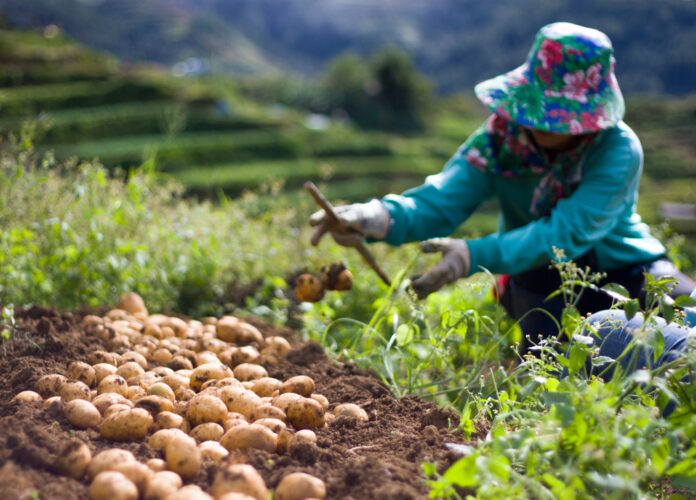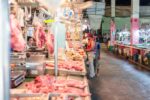Agriculture output in the final three months of 2022 retreated by 1 percent, pulled lower by the crops and fisheries sectors, according to the Philippine Statistics Authority (PSA).
This was a reversal from the 0.5 percent increase in the fourth quarter of 2021.
The sector’s performance in 2022 barely changed and went down by only 0.1 percent or slower than the previous year’s decline of 1.7 percent.
At current prices, the value of agricultural production during the quarter amounted to P611.52 billion, up by 9.4 percent. The full year value hit P2.14 trillion, higher by 7.5 percent.
The crops subsector, which contributed the biggest share in the total agricultural output at 59.1 percent, decreased by 1 percent during the quarter as cuts in production were registered for palay, corn, rubber, mango, ampalaya, calamansi, mongo, cabbage, banana and eggplant.
Palay production for the quarter fell by 2.5 percent as it hit 7.22 million metric tons (MT) from 7.4 million MT as corn registered a 6.9 percent drop to 1.98 million MT from 2.12 million MT
This drop could have been higher were it not for the increased production of tobacco, pineapple, potato, sweet potato, abaca, cacao, coffee, coconut, tomato and cassava.
The fisheries subsector which has a 13.8 percent share in the total agriculture output, went down by 6.6 percent in the quarter as several fish species recorded output contractions.
Among those that experienced lower production levels were tambakol, mudcrab, sapsap, talakitok, bisugo, alumahan, grouper, tamban, tilapia, tiger prawn, milkfish, blue crab, galunggong and tulingan.
The poultry subsector with 1.8 percent improvement in output in the fourth quarter of 2022 contributed 12.5 percent to the total agricultural production as all its contributors posted increased output.
Expansions in the value of production were recorded for duck eggs at 4.3 percent or from 12,910 MT to 13,460 MT; duck by also 4.3 percent or from 6,790 MT to 7,080 MT; chicken by 2.3 percent or from 483,030 MT to 494,120 MT; and chicken eggs by 0.2 percent or from 174,580 MT to 174,990 MT.
The PSA report noted that the livestock subsector, which shared 14.3 percent in the total agricultural output, posted a 2.5 percent growth in the fourth quarter of 2022 as hog and dairy production improved.
Hogs, a major component of the subsector, experienced a 3.4 percent improvement to 465,320 MT from 450,220 MT during the quarter as dairy production went up by 1 percent to 6,890 MT from 6,820 MT.
The sector’s performance could have been higher were it not for the reduced production of goat, cattle and carabao for the period.
The Department of Agriculture (DA) earlier said it expects local agriculture sector to grow as much as 2.3 to 2.5 percent this year due to intensified budget allotment.
As this develops, Danilo Fausto, president of the Philippine Chamber of Agriculture and Food Inc. (PCAFI), said the slight decrease in the production of rice and corn was expected due to the increase in cost of inputs like fertilizers, fuel and natural calamities.
However, Fausto said better yield is expected this year because of more government subsidies and the use of high-yielding rice varieties, among other factors.
“On the other hand, hogs are on to recovery as commercial farms are learning to live with the African swine fever (ASF) through proper biosecurity measures. Poultry is always resilient and can cope up even with avian flu,” Fausto added.
However, the PCAFI leader said the backyard growing of livestock and poultry may eventually be “replaced by big commercial farms as the requirements for modernization and biosecurity measures becomes a necessity” apart from the fact that big commercial farms have a complete value chain facilities that shields them from import competition.
Fausto also said the fisheries sector requires an upgrade to “expedite the development of aquaculture farms and the establishment of mariculture parks with more fish cages to increase fisheries output.”
As for Elias Jose Inciong, United Broiler Raisers Association president, the fall in agricultural performance “is a glaring indication of the declining share of producers, mainly farmers and fisherfolks in the value chain.”
Inciong said it is a “logical consequence” of the government’s neglect of the local agriculture and fisheries sector and emphasis on importation,. He adds the recent problem in the supply of onions is a “preview of what will happen” to the sector if such moves persist.
For Raul Montemayor, Federation of Free Farmers national manager, a “worse performance” was expected of the agricultural sector, especially for crops, due to higher cost of inputs.
Montemayor said most of the subsectors posted declines in volume in both value and production.
“Overall, although there may have been intervening factors like calamities, it appears that the billions being spent for the agriculture sector are not having the desired impact and the DA must make an in-depth analysis of why this is so,” Montemayor explained.
For Jayson Cainglet, executive director of the Samahang Industriya ng Agrikultura, the decline may have been caused by the “unprecedented imports the past three years across commodities.”
Cainglet said there is “no motivation to farm or raise livestock as policies enacted further discourages local farmers to produce.”







